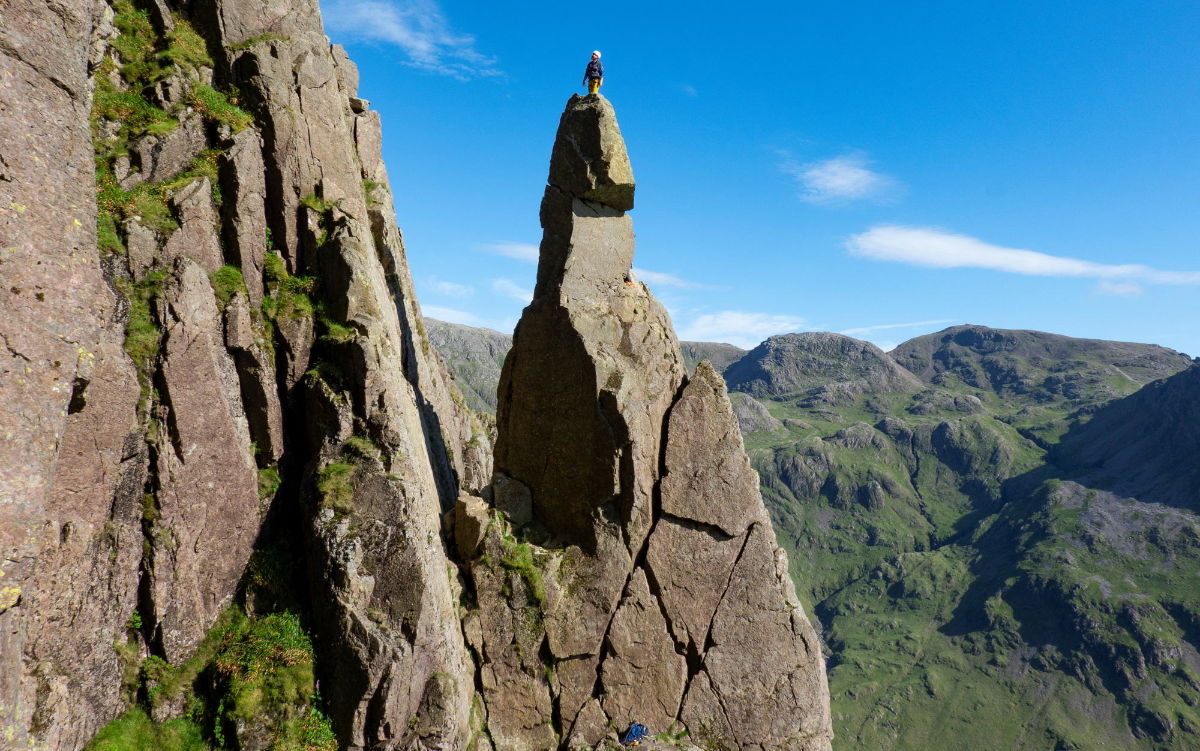
Photo: Needle Sports owner Stephen Reid on the summit of Napes Needle © Stephen Venables.
Needle Sports is named after Napes Needle, a prominent rock pinnacle, some 20 metres high, situated amongst the Napes Crags on the southern flank of Great Gable, a mountain in the heart of the English Lake District.
Napes Needle was first climbed (solo) by Walter Parry Haskett Smith in June 1886, an ascent considered by many authorities to mark the birth of rock climbing as a sport in its own right.
Today the original route of ascent via the Wasdale Crack (as seen in the photo right) is graded Hard Severe. The Arête follows the right-hand edge and is the least sustained route of ascent, though it too ends up with some hard moves at the top (above the Shoulder) where it joins the Wasdale Crack route and is also graded Hard Severe.
The final moves onto the summit block are the most trying, although manufacturing an adequate belay and descending in safety requires considerably more mountaineering acumen than the ascent (see below)!
Although easy by the standard of modern test pieces, an ascent of Napes Needle will always remain a memorable day in any climber's career.
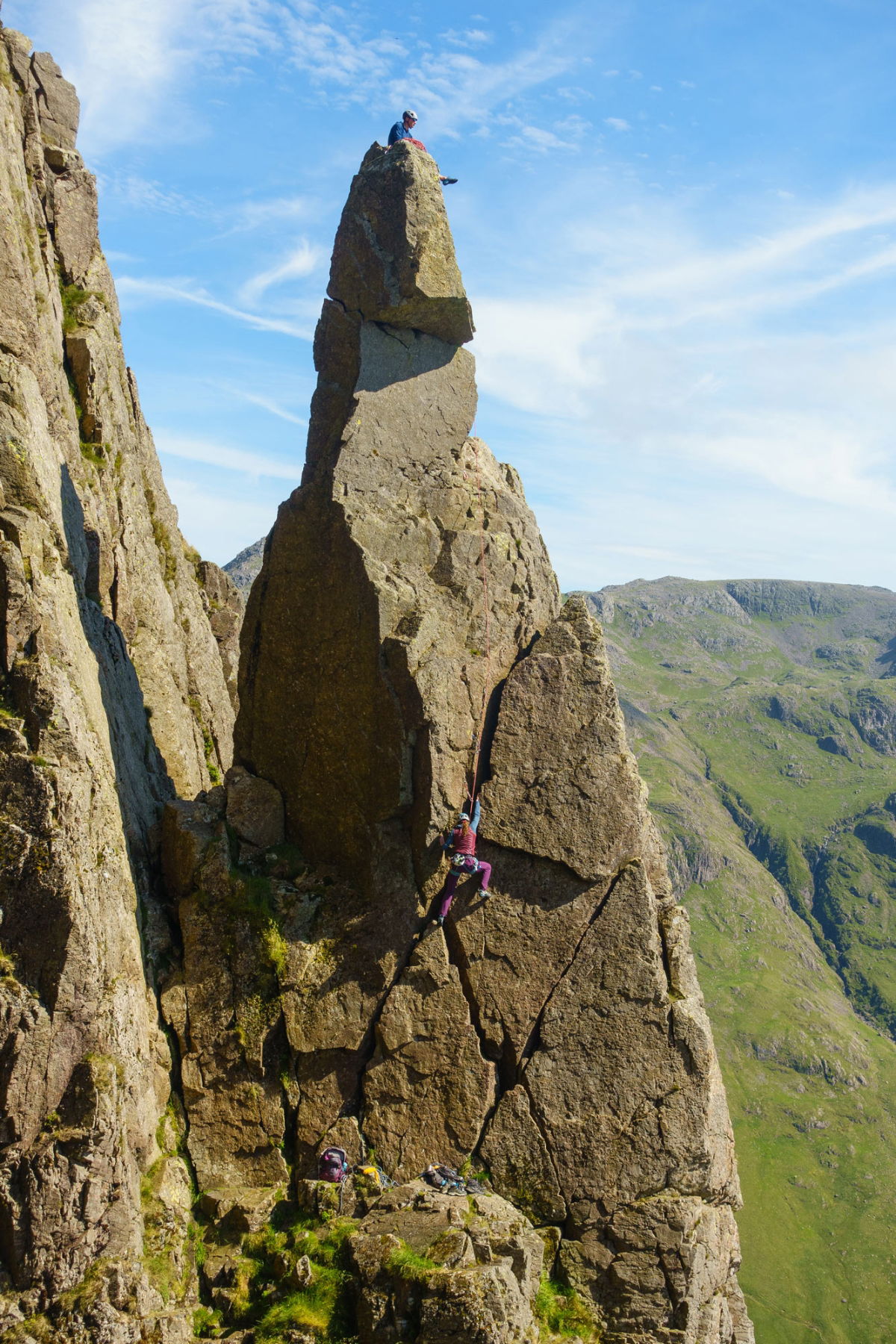
Photo: The classic view of Napes Needle as seen from the Dress Circle. The climbers are on the Wasdale Crack (the original route of ascent). The Arête takes the arête to the right of the Wasdale Crack. Both routes meet on the Shoulder under the summit block which forms the crux of both climbs. The Gap is the cleft to the left of the Needle, between it and the main crag. Threading the Needle (M) is the traverse of the Gap and is a popular scramble. The highest mountain in the distance is Scafell Pike. Climbers: Chris Cook and Katie Wilson © Stephen Reid.
How to Get Down off Napes Needle in Ten Easy Lessons (and survive to the tale!)
NB: These notes are intended to assist the climber who has already gained some knowledge of rock climbing and is fully aware of its risks but still wishes to progress further up the grades, and indeed the mountains. They are brief and not designed to be comprehensive in any way. Ultimately climbing is a dangerous sport and claims many casualties each year. One of the guiding principals of British climbing and mountaineering is that it is the individual climber is responsible for his or her own safety. If you cannot accept this then this site and probably climbing in general is unlikely to suit you. May we refer you to this very interesting site instead!
Whilst climbing Napes Needle is tricky, getting down again in safety can be prove even more so. Although abseiling is possible (with a lot of knowledge and extreme care), there is no obvious anchor, and there have been several fatalities due to this practice which therefore cannot be recommended. Instead the following is suggested:-
- Climb the Needle (by any route - The Arête is the easiest and most pleasant way) to the Shoulder. Belay from the horizontal crack in the summit block.
- Bring up your second. Attach them to the belay on the Shoulder. Before starting the next pitch, place a camming device (Friend) in the horizontal crack that runs round under the summit block on the Gap (north) side. This needs to be as far round as you can get whilst still allowing your second to be able to reach round to clip it.
- Climb to the summit and belay by draping a large loop of rope around the overhang of the summit block on the west side (this is the overhang seen in the photo above). Drop a second loop down to the south side and get your second to attach it to your belay on the Shoulder. Finally drop a third loop down the Gap side and get your second to lean round the "back" of the summit block and clip it into the cam that you placed there previously. It is also possible to place a blue Totem Cam in a horizontal crack one foot below the summit on the side facing Needle Ridge. Sit down firmly and tighten up these various loops using clove hitches.
- Bring up your second, instructing them to unclip your runners (but not your belay!) and leave them in situ.
- Pat each other firmly on the back whilst exclaiming, "Good show Old Boy/Girl!" - or words to that effect.
- Top-rope/lower your second down to the Shoulder and get them to clip the rope through your runners and re-attach themselves to the belay.
- Down-climb to the Shoulder (with assistance from your second if required) and belay. If the cam in the back of the summit block is left in place then it is even possible to use it to guide a top rope over the summit.
- Top-rope/lower your second down to the ground via The Arête (the easiest route to/from the Shoulder). Instruct them to place plenty of runners for you and clip them into the rope(s). If you climbed The Arête on the way up then of course you can simply leave the runners in place and the second only has to clip the ropes back into them.
- Get them to belay you whilst you down climb The Arête removing the runners en route.
- Shake hands heartily and proceed immediately to the nearest hostelry to celebrate!
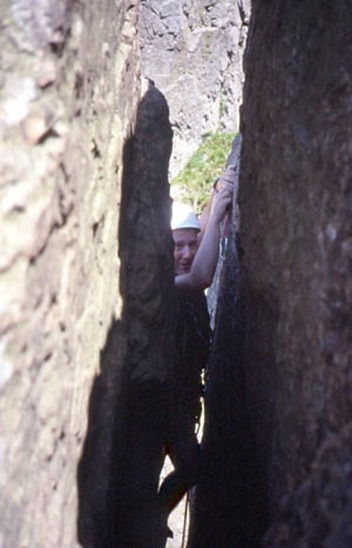 |
|
Photo left: An unusual view of the Wasdale Crack, taken from the Lingmell Crack. © Stephen Reid
Photo right: What goes up must come down, but how? A climber on the summit of Napes Needle with another about to join him.© Stephen Reid
|
|
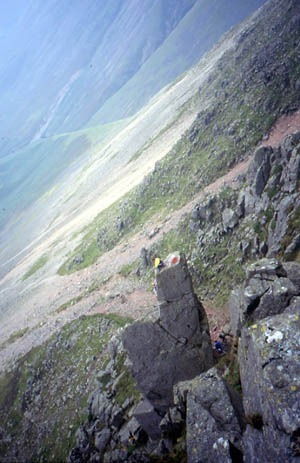 |
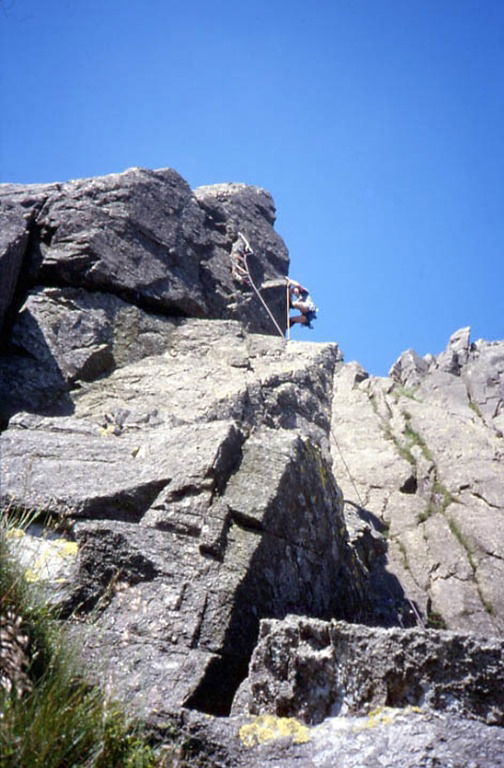
Photo: Stephen Reid on Sick Heart River (E2, 5c), a new route he put up with Ron Kenyon on Napes Needle in 2000. The climb follows the arete above his head and was the first new route on the Needle for over half a century. The name is taken from the title of a book by John Buchan. © Colwyn Jones
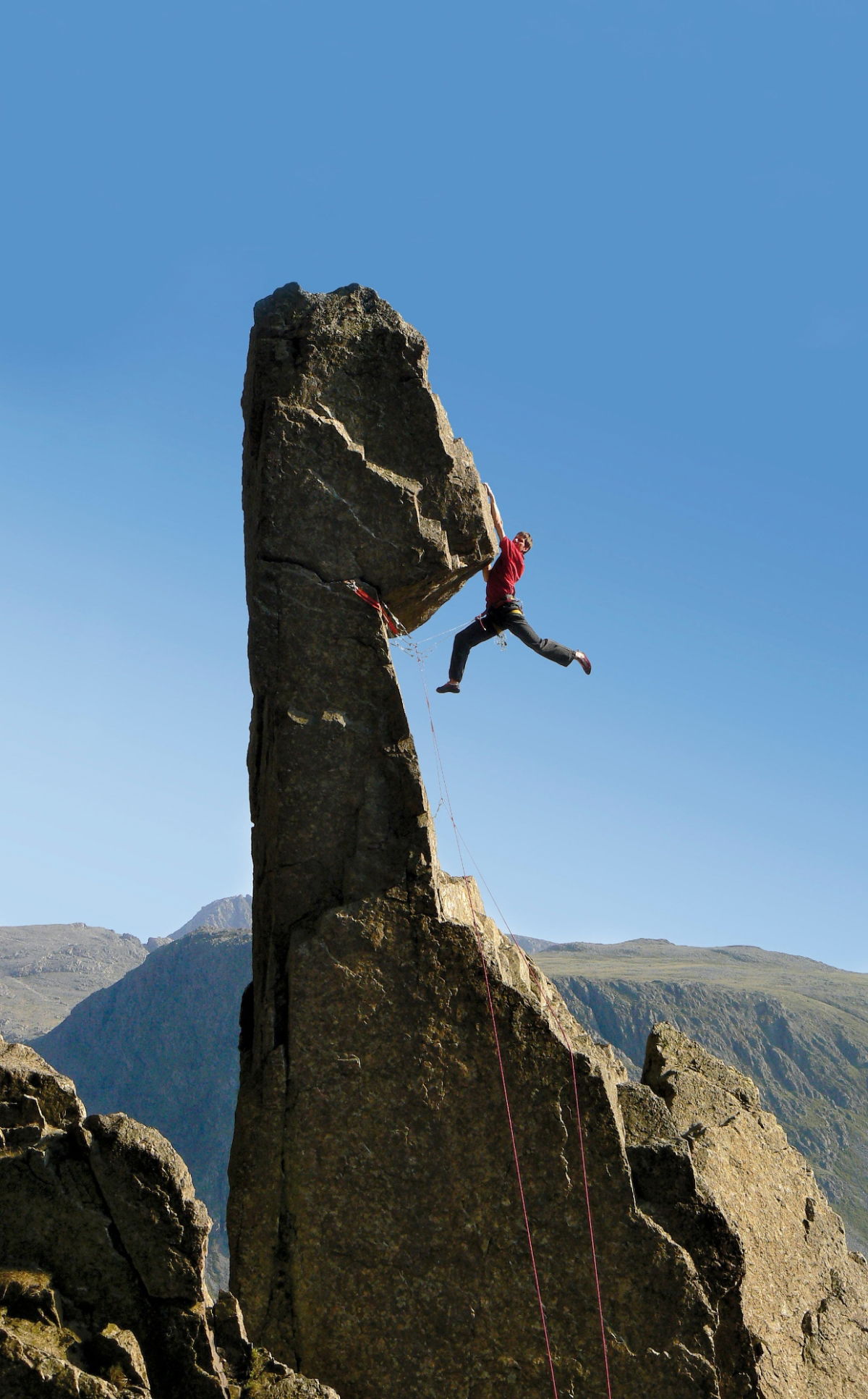
Photo: Craig Matheson attempting the second ascent of Phil Rigby's spectacular climb, The Wasdale Roof (E3, 5c), the first alternative way to climb the top block on Napes Needle for over 90 years! This superb image was used as the cover of the 2007 FRCC climbing guidebook, Gable & Pillar. © Al Phizacklea
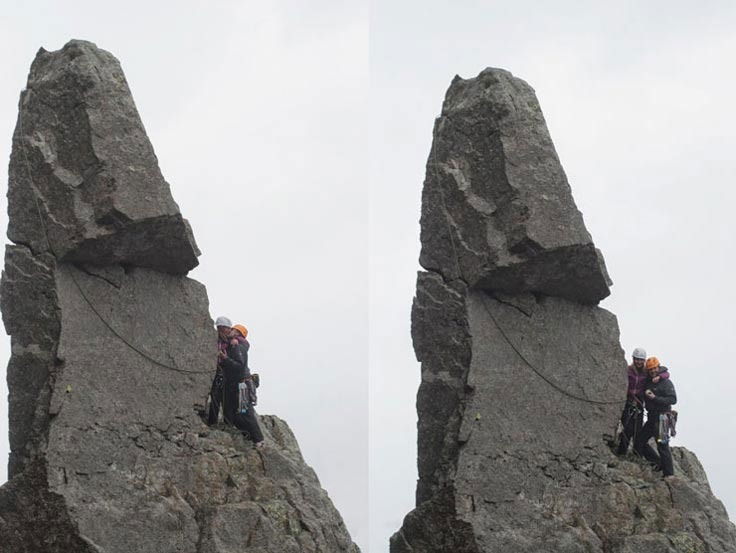
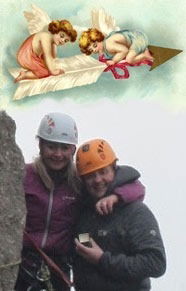
The Happy Couple!
© Colin Smith of Studio671
Angie Jones brought a much needed romantic streak to UK Climbing with her post Marriage Proposal on Napes Needle (4/5/14). She wrote, "So yesterday, four of us clambered up to. Napes Needle. My partner Richard Crabtree was designated the lead and me as second. First view up to shoulder looked difficult for gear placement but plenty of handholds - this was my first climb at this grade. Ric spent a bit of time finding the route but was soon celebrating on the top. He looped the rope under the nose to strap himself to the top for a secure belay. I was nervous here but I grappled up and stood on the top - crucifix style! Amazed myself! Not much room and a bit precarious on the safety, I climbed down on a belay then Ric down climbed keeping the rope around the nose for added protection. We paused on the shoulder shivering and full if elation and adrenalin having achieved this classic climb in our favourite place and then Ric says "know how you say I'm not romantic? Well here we are by England's highest mountain and deepest lake" Then he reaches into his chalk bag, pulls out a box which contained a beautiful solitaire diamond ring and asked me to marry him. Of course I said yes and cried and shook with emotion on windy shoulder of Napes Needle. The most perfect day on earth, the most amazing man on earth and the most beautiful place - with that wonderful mix of danger and nature - I have never been so happy in my life. I wonder, are we the world's first couple to get engaged on Napes Needle?"
We have heard of 16 people being on the summit at once, Ivan Waller famously did a headstand up there, Millican Dalton used to guide parties up it and then produce a spirit stove and brew tea on the top and someone once took a violin up to play, but we've never heard of a marriage proposal before. Congratulations to you both from all at Needle Sports!
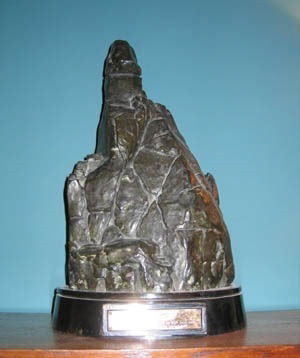
"Haskett-Smith, Haskett-Smith,
Alone he slew the Monolith."
George Basterfield
This Bronze Statuette of Napes Needle was presented to WP Haskett Smith in 1938 by the FRCC after he had made a 50th anniversary ascent of the Needle on Easter Sunday, 1936 (aged 74!). It is now rather aptly in the possession of Needle Sports.
The bronze was commissioned by GR Speaker (President of the FRCC in 1938) and made by Una Cameron. Only two copies are known to exist, the other being in the possession of the FRCC.
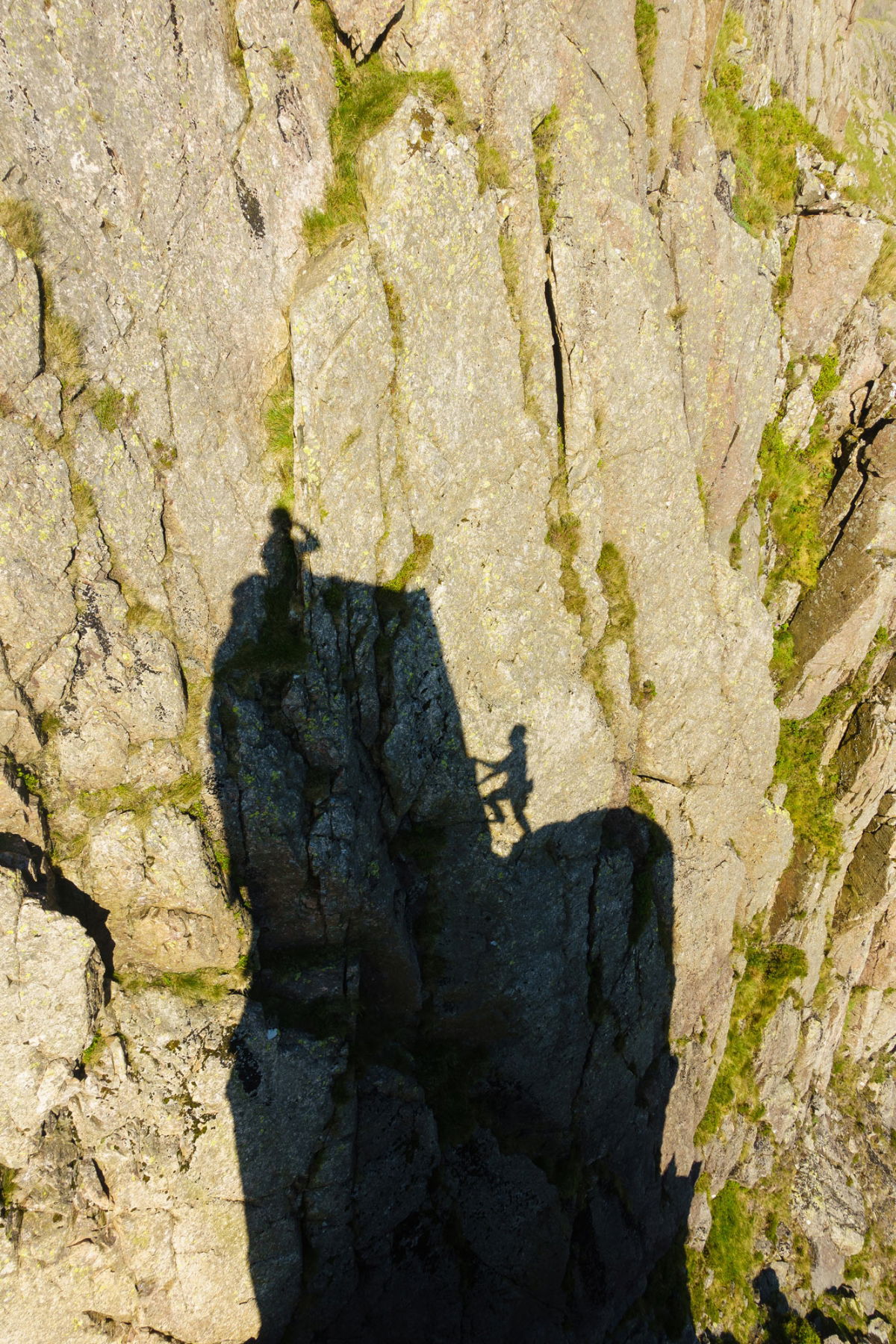
Photo: Shadows on the Wall © Stephen Reid